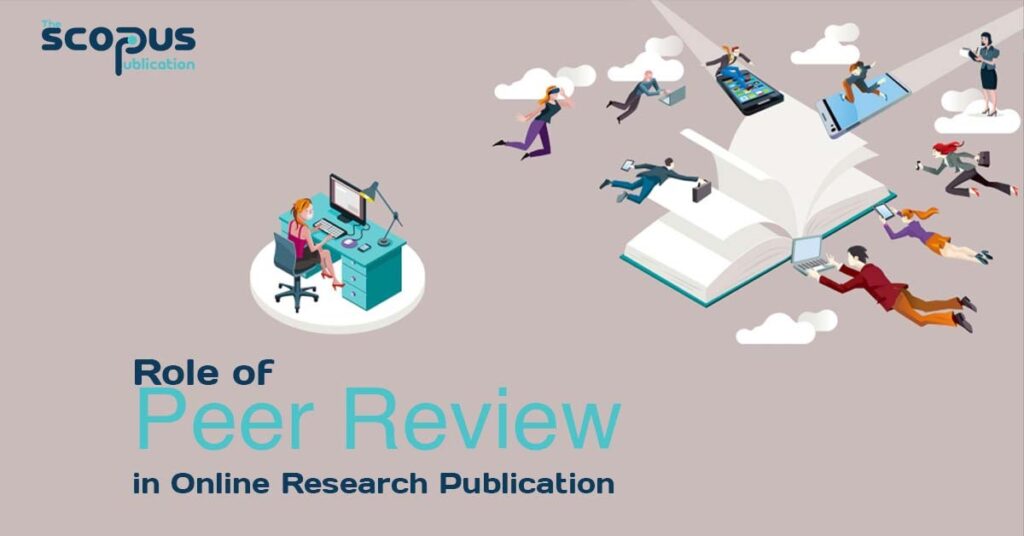Peer review has always acted as a symbol of quality and integrity in determining the credibility of a journal publication. It offers the same level of reassurance whether we talk about an offline or an online research publication. What are the advantages of this review and why do most of the scholars want to take information from those articles and journals that are peer-reviewed?
This blog post will talk about peer review, its benefits and risks, and some modern alternatives of this process.
What is Peer Review?
Peer review is an academic process in which one researcher’s work is reviewed by another. The purpose of this review is to validate the research objective and methodology. Also, these reviews uncover if the study fulfills the academic standards of reliability, validity, depth, and originality.
How are Peer Reviews Conducted?
We can see the purpose of these reviews is to validate the research idea and match it with the publication’s scope. These reviews are conducted by the reviewers connected with the journal that has received the research paper. First, the author completes the research and writes it down according to the editorial guidelines of their target journal.
Then, they send the work to the editor who reads it and sends it to relevant subject matter experts. These experts act as peer reviewers and study the paper thoroughly. They use their knowledge of the topic to determine if the research premise and scope fit the current landscape in academia or not.
They may find some ambiguity in the paper or may not agree with some assumptions or methodology of the research. In such cases, they send the research back to the editor with their questions. The editor will communicate these concerns to the author requiring a response or an edit. The response from the author is shared with the same reviewer who either validates it or sends back another inquiry until the confusion is cleared.
Once all doubts are cleared, the reviewer gives a positive review of the paper which permits the editor to publish the paper after fixing its format. Many journals employ multiple reviewers to check every entry.
Types of Peer Reviews
Most journals use two different types of peer reviews which are single-blind peer reviews and double-blind reviews. Single-blind review work by exposing the identity of the author to the reviewer. Double-blind reviews keep the identity of both reviewer and author secret from each other. The purpose of keeping these identities secret is to prevent bias from seeping into the review process.
Advantages of Peer Review
The biggest reason why peer review is encouraged and favored by many scholars is that it upholds the integrity of research. Peer reviewers are experts in their fields and have spent time learning the research methodologies and research integrity in that subject. When laymen or intermediate learners of the subject know that these scholars have validated the research, they find it credible and noteworthy.
As such, peer review adds credibility and weight to scholastic work. These reviews act as watchdogs and prevent low-quality studies or poorly constructed methodologies from getting published. This way, the readers can assess the credibility of the journals that publish peer-reviewed articles against others.
Criticism of Peer Review
These reviews are conducted by humans who are prone to errors and bias. Consequently, these reviews can also suffer from mistakes seeping into them. Here are a few disadvantages of peer reviews as elaborated by some scholars.
Human Bias and Prejudice
The academic world is not free of the politics and social nature of human transactions. Because of reviewers’ ability to get affected by social interactions, their reviews on many studies are compromised. Several times, reviewers find it difficult to critically analyze the work of their favorite authors. At other times, they may get too harsh while reviewing rival’s work. It is also often noted that reviewers would delay the review to buy time for their similar work so it can get published first.
Many journals use a double-blind review process to curb these complaints. A double-blind review allows the editor to reduce this bias by hiding the identity of the author from the reviewer. Yet, studies have claimed that this secrecy rarely proves to be beneficial. Oftentimes, reviewers deduce the writer’s identity from the writing style and citation selection. Single-blind reviews are even more exposed to the risk of biases because of prejudice.
Time Lapse
These reviews take time. Some papers demand less time than others. Reviewers spend anywhere between 6 hours and a hundred hours reviewing a journal article. The amount of time spent on a review varies depending on the length and complexity of these articles.
Now, the time spent on actually reviewing an article is not the only cause of delayed publication. These reviewer’s commitment to reviewing research publications is an additional duty that they take up in addition to their academic work. These reviewers have a full schedule filled with lectures and research work. They are busy people.
Considering the workload that they manage routinely, they take a few weeks before completing the review and writing down their doubts and questions. Even after this review, the process is not complete. Many papers take two to five rounds of revisions before getting published. Eventually, the research takes up to a year before publication.
Human Error
Reviews are not free of errors and omissions. Many reviewers have failed to identify and report serious issues in the scope definition and methodology of research. While we can debate on the reasons that cause such mistakes, the fact that these issues happen time and again raises questions on the effectiveness of this process.
Superficial Arrangement
Many scholars have claimed that most journals only fulfill the peer-review requirement superficially. They don’t engage many reviewers and they don’t reward these reviewers much. Given these claims, the integrity of articles published in peer-reviewed journals is just as questionable as the quality of similar articles in other journals.
Way Forward
While peer review is a quality feature that certifies the credibility and authenticity of any journal, many critics question its validity. Are these reviews as beneficial as they claim? Are the peer-reviewed journals as credible as they appear? One can only answer these questions after looking at the credibility, independence, and integrity of the reviewers and journals behind them.
The landscape of online research publications is changing rapidly. Many online journals allow the reviewers to post online reviews as well as queries. This system is called open peer review as it allows both parties to know the identity of each other. These reviews are better because a research paper can get more reviews in online publications than the traditional peer review process.


